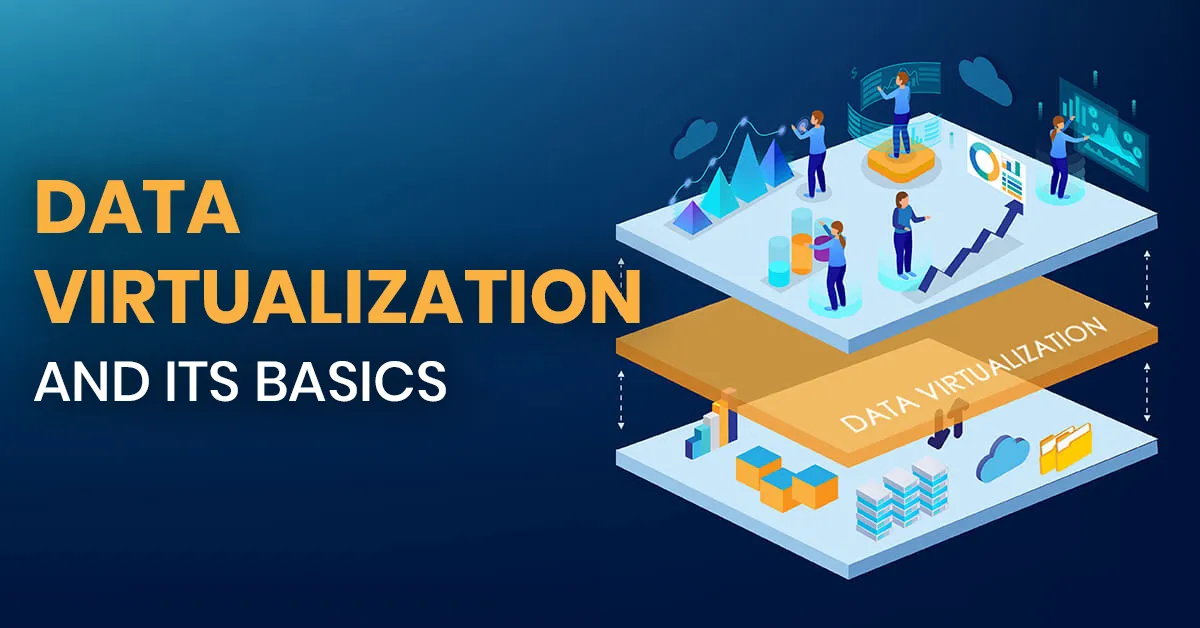Data Virtualization and its Basics
Blog: Indium Software - Big Data
In the modern world, business data comes in several forms and is stored in a variety of locations. Structured and unstructured data in various formats are stored in Data warehouses. This big data in such varied types is stored in databases, log files, SaaS, applications, and CRM.
The question is how to get an overview of the far-reaching data and handle all of it?
The answer to it is Data Virtualization!
Data virtualization is a term used to describe a data management method that allows an application to retrieve and use data without requiring technical information about the data.
Data virtualization incorporates data from different sources without copying or transferring data, providing users a single virtual layer covering various software, physical locations, and formats.
It is the best solution in the latest data integration system because it breaks down formats and silos, performs data replication in a real-time format, allowing speed, agility, and response time.
It helps with efficient data processing, data mining and enhance predictive analytical software. Efficient use of machine learning and artificial intelligence is impossible without virtualization of data.
Normally, data virtualization does not persist or duplicate data from source systems. It stores only metadata for virtual viewing and integrating logic. Large scale data virtualization solutions are designed to be less complex and agile.
Below are some of the sources of data that enter the data virtualization software.
- Applications
- Excel and XML files
- Data warehouses & Data lakes
- Cloud data
- IoT devices
- Websites
Cutting edge Data Virtualization Services at your Finger Tips
Data Virtualization Architecture
Data virtualization systems need to be flexible to respond to evolving requirements around the enterprise.
New data sources will be continually added, and others deleted. And, as and when more outlets are added, there is greater chances of complexity and slow scaling. This could have codes that are not compatible. The following are ways to avoid it.
- Designing applications with layered approach to the isolation of business logic ad transformation of elements.
- Having a strict set of guidelines for requirements such as naming and reusability.
- Using data virtualization modelling tools
- Involving data infrastructure, data security and data governance teams from the outset to develop data connectors in full regulatory compliance.
How Does it Work?
A data virtualization software enables data stored in various types of data models to be combined in a virtual way.
This type of platform allows approved users to access the entire volume of data in a business from a single point of access without considering the location of data (data warehouse or cloud data lake).
Since data virtualization systems interpret data sources in such accurate ways, they have a wide range of applications.
The centralized management can be done using data virtualization thereby aiding in improved data governance.
This can make the deployment of the data simpler to provide faster business insights.
Data virtualization also plays a role in managing the data access.
One of the most important reasons to deploy a data virtualization system is that it can help in the delivery of business objectives faster than ETL process. This can enhance the stakeholder`s experiences and needs in the most cost-effective way.
Data Virtualization Benefits
- Acceleration of business values: analytics applications can be implemented earlier, and higher value can be reached faster as changes occur.
- Improved market insights: Day-to-day updates, easy access and understanding of data and requiring less effort than ETL processes
- Reduction of costs: The reuse of data can help in an interactive development and validation that can boost efficiency and avoid rework.
- Infrastructure of data management: Data virtualization can help in reducing the cost of purchasing, infrastructure, and maintenance.
| ANALYTICS BENEFITS | OPERATIONAL BENEFITS | EMERGING BENEFITS |
| Physical data integration | Virtual data storage capabilities | Sharing cloud data |
| Semantic layers for analytics | Efficient data management | IoT integration |
| Logical data warehouse systems | Data migration made easier | Enabling data hub |
| Regulatory methods to move data | Greater access to data | Data integration |
Sector-Wise Applications of Data Virtualization Systems
It has been predicted that the data virtualization market will grow to be worth 278USD billion by the year 2023.
Let us witness the sector-wise applications of data virtualization systems in the table below.
| Communications and technology | Market research services differentiation Building virtual data lake for clients Increased revenue per client Customer care optimization Improving customer insights |
| Energy sector | Optimization of the upstream production of energy Improvise maintenance and repair Optimization of cross-refinery |
| Financial services | Improvising trade Efficient client onboarding Management of risked income Reduce data complexity Enhancing cash management Efficient data democracy |
| Manufacturing | New product development Enhanced supply chain mechanisms Global supply chain designs |
| Healthcare | Efficient claims management systems Data storage and data handling can be made easy. Data governance- patient record keeping systems |
Leverge your Biggest Asset Data
Leverge your Biggest Asset Data
WIND-UP
Data virtualization can enhance data warehousing systems by providing data layers that can be managed and governed from anywhere.
In the perspective f businesses, data virtualization needs to be implemented with utmost delegation to avoid mishaps.
In case of an enterprise-wide deployment, the implementation needs to happen with a close watch.
The challenge in implementing a data virtualization system is that the business needs to have the right balance between architectural framework and data management framework.
Teams need to prioritise their data virtualization deployment based on the business value, objectives and capabilities.
There must be a constant evolution among the business team, data services, data layers and the source layer as and when business decisions are made so that the best outcomes can be enjoyed by the business.
The post Data Virtualization and its Basics appeared first on Indium Software.
